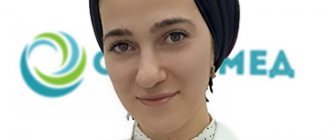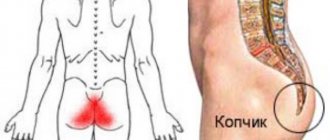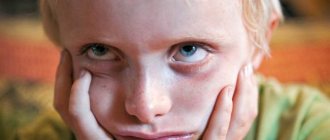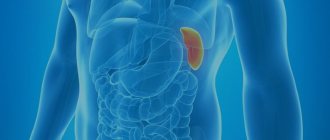What you need to know about sinusitis?
In humans, in the bones of the skull along the line of the forehead and nose there are sinuses (cavities with air): frontal, sphenoid, maxillary, cells of the ethmoid labyrinth.
When pathogenic organisms enter, they can become inflamed, resulting in sinusitis. Sinusitis is a disease of the maxillary sinuses. This name is received in honor of the researcher who described this type of sinuses, Nathaniel Highmore. The medically correct name for the disease is maxillary sinusitis.
Sinusitis - a complication of a runny nose
Three weeks after ARVI, my son began to complain: his ear hurt. The otolaryngologist diagnosed sinusitis and otitis media at the same time. What are the reasons, since we followed all the pediatrician’s orders, even took antibiotics? What is the best treatment now?
Unfortunately, this is not an uncommon story. If they suspect that a viral infection has been joined by a bacterial infection after a “cold,” pediatricians often prescribe antibiotics to children to avoid complications. As a result, the infection in the sinuses is suppressed, but the disease is not completely cured. And the inflammation continues with erased symptoms - sinusitis develops. Mucus from the nose can not only come out “forward”, but also flow down the wall of the pharynx, from there it enters the auditory tube, causing inflammation of its mucous membrane.
If otitis media and sinusitis “work as a duet,” antibiotic treatment must be prescribed to suppress the infection. It is important to quickly relieve swelling in the nose and auditory tube - vasoconstrictor nasal drops, antiallergic and anti-inflammatory sprays are prescribed. The doctor conducts sessions of blowing the auditory tube, rinsing the nose and other procedures, and physiotherapy is used.
But these are “general points” of treatment; the doctor selects a specific regimen depending on the course of the disease, the effectiveness of the therapy, and the age of the child. For children under two years of age, hospital treatment may be recommended.
If you still have questions, you can ask them to a pediatrician or ENT doctor online in the Doctis application.
Reasons for development
Due to its occurrence, sinusitis is rhinogenic
,
odontogenic
,
traumatic
,
allergic
.
- Rhinogenic occurs against the background of rhinitis. Provoking factors can be bacteria, viruses, hypothermia, allergies, and side effects of medications. If this disease is not cured in time, it will go deeper, affecting not only the nasal cavity, but also the sinuses.
- Odontogenic sinusitis appears due to a dental infection, which gradually spreads to the sinus mucosa (the tissue around the tooth hurts, a communication is formed between the sinus and the oral cavity), causing it to become inflamed.
- Traumatic sinusitis occurs as a result of mechanical damage to the maxillary sinus, nasal septum or upper jaw.
- With allergic rhinitis, the body reacts in a special way to one of the irritants that causes such a reaction. First, unpleasant sensations appear in the nasal cavity, and then they move to the maxillary sinuses. Allergens include pollen, fur, animal excrement, dust mites, and plant chemicals.
According to the nature of the course, sinusitis can be:
- acute (onset of disease, less than 3 months),
- recurrent acute (repeated up to 4 times a year),
- chronic (appears if the acute stage is not treated, that is, 3 months after the onset of the disease),
- exacerbation of chronic sinusitis (with the appearance of new symptoms in addition to existing ones).
The severity of acute sinusitis varies from mild to severe:
- With a mild course of the disease in a person, the symptoms are moderate: there is no fever, headaches or complications, there is slight congestion, cough, and nasal discharge.
- At the moderate stage, the temperature is within 38 ° C, a cough and runny nose are observed, heaviness of the head (in the projection of the paranasal sinuses) is added when moving and bending, and otitis media.
- In a severe case, the temperature exceeds 38 ° C, all the usual symptoms appear more strongly, periodic or constant pain occurs in the projection of the paranasal sinuses, which intensifies when moving or tilting the head. Over time, intracranial or orbital complications are possible.
Diagnosis and treatment of childhood sinusitis
For an experienced otolaryngologist, diagnosing sinusitis is not difficult. After a conversation with the parents to clarify the patient’s complaints and collect anamnesis, the doctor conducts a direct examination of the nasal cavity. The most informative diagnostic method is considered to be an endoscopic examination, which helps to examine all the remote corners of the nasal cavity. If necessary, an x-ray examination is performed. A general blood test indicates the presence of an inflammatory process in the body, and a smear taken from the nasal cavity allows one to determine the nature of the pathogen and its sensitivity to antibiotics.
The treatment regimen for the disease may include:
- taking antibacterial drugs;
- vasoconstrictor drops;
- hormonal nasal sprays;
- solutions for rinsing the nose based on sea water;
- antipyretic drugs;
- rinsing the sinuses using the “cuckoo” method;
- physiotherapeutic procedures.
Reasons for development
Sinusitis develops after pathogens enter the sinuses: viruses, fungi, bacteria. In children, the most common pathogens are pneumococcus, parainfluenza virus, streptococcus, staphylococcus, rhinovirus, hemophilus influenzae and others.
If the child’s immunity is in order, then he can easily overcome the infection, but there are cases when the child’s health is weakened and the body can no longer normally resist the pathogen.
Among the factors that influence the decrease in immunity and help pathogens penetrate the body are the following:
- diseases of the upper respiratory tract (rhinitis, ARVI, tonsillitis, pharyngitis);
- inflammation in the oral cavity (caries or stomatitis);
- enlarged adenoids;
- polyps or other formations in the nasal cavity;
- narrow nasal passages;
- deviated nasal septum.
Important
: sinusitis or maxillary sinusitis is usually bilateral, that is, it penetrates both sinuses.
Children from birth to 3 years old will not yet be able to describe if they are in pain. In this case, it is important for parents not to miss the development of the disease.
Prevention
Prevention of childhood sinusitis consists of following fairly simple rules:
- promptly and correctly treat ARVI and colds so that inflammation from the nasopharynx does not spread to the maxillary sinuses;
- dress your child according to the weather;
- avoid hypothermia;
- rinse your nose with saline solutions after visiting public places and at the first signs of acute rhinitis;
- visit the dentist for preventive purposes in order to detect caries and other oral diseases in time;
Strengthen your immune system by taking regular walks in the fresh air, including essential microelements in your child’s diet, doing hardening and physical activity.
Diagnostics
At the first symptoms of sinusitis - severe and persistent nasal congestion, weakness, fever - you should consult a doctor. It is important to understand that a small child cannot always say exactly where and how it hurts, so it is important to see a doctor as quickly as possible.
The ENT doctor interviews the patient and conducts an examination. To clarify the diagnosis, you will need to do a blood test for leukocytes and take an x-ray of the maxillary sinuses.
If necessary, a puncture (examination of mucus) is performed. Important: this procedure is quite unsafe, since during sample collection an infection can enter the eye sockets and cause an abscess.
Description of the disease
Sinusitis is a common childhood disease in which inflammation (often purulent) of the mucous membrane of the maxillary sinuses occurs.
The main reason for the development of pathology is the blockage of the passages connecting the sinuses with the nose, as a result of which the ventilation of the channels deteriorates and a favorable environment is created for the proliferation of pathogenic microflora. A similar situation can arise after suffering from infectious and inflammatory diseases of the ENT organs, a deviated nasal septum, hypertrophy of the adenoids, etc. Sinusitis brings significant discomfort to the child and greatly disrupts the usual way of life. Symptoms such as nasal congestion, pain in the bridge of the nose, and purulent discharge from the nasal passages occur. Untimely treatment of the pathology can lead to serious complications - meningitis, brain abscess, inflammation of the trigeminal nerve, etc. That is why parents should consult their child with a qualified ENT doctor at the first manifestations of sinusitis.
Treatment
Medicines, home remedies and specific therapy should be prescribed according to the type of disease.
When treating sinusitis, a person does not need to be hospitalized, since home and outpatient procedures are usually sufficient.
Treatment is complex: taking medications that eliminate individual symptoms of the disease, physiotherapy, taking medications to strengthen the immune system, taking antibiotics.
The main methods of treating sinusitis:
- Broad-spectrum antibiotics for internal use. Prescribed by a doctor, when used correctly they are almost harmless to the body. The product can only be used if the child has a high fever and intoxication. Important: To protect the gastrointestinal tract while taking the medicine, you need to take probiotics or prebiotics along with the medicine.
- Antiseptic drugs for topical use are drugs that act on the cause of the disease - pathogenic bacteria. These drugs also include drops based on silver proteinate, which help get rid of a runny nose. It is worth noting that now in pharmacies there are a lot of such drops from different manufacturers, but for safe use it is better to choose the company that produces the original drug
- Strengthening the immune system with the help of folk and medicinal remedies: mustard plaster, rubbing, herbal teas, propolis (roll cotton pads and put in the nostrils for 5 minutes), vitamin C.
- Physiotherapeutic procedures: inhalations, electrophoresis, “blue lamp”.
- Home physiotherapy: inhalations using a nebulizer, steam inhalations.
If none of the remedies work, the doctor may prescribe surgery. As a rule, this is a puncture through which the pus accumulated in the sinus is removed.
How to treat acute sinusitis in a child?
An error in diagnosis can lead to a number of complications. In order to recover quickly and without complications, the ENT specialist refers the patient for diagnostics. Based on the symptoms and examination results, the specialist determines: the form (acute or acute stage of chronic disease) and the presence of concomitant diseases. Treatment measures are determined by the doctor based on age, symptoms, and etiology.
Therapy includes:
- vasoconstrictor drops;
- anti-inflammatory drugs;
- mucolytics;
- nasal rinsing;
- antibiotics and hormonal drugs;
- surgical intervention.
Drops that constrict blood vessels are used with caution; the drugs are quickly addictive.
Friends! Timely and correct treatment will ensure you a speedy recovery!
Nonsteroidal anti-inflammatory drugs are prescribed in the form of a suspension. The course must be completed until symptoms are eliminated. Abuse of NVP leads to the accumulation of fluid in the maxillary sinuses, which accelerates the transition of sinusitis from acute to chronic form.
Mucolytics are used to thin the thickened mucous membrane in the sinuses during chronic exacerbations.
Antibiotics are prescribed only for symptoms and treatment of bacterial diseases in children. Due to the smaller list of contraindications, penicillin drugs are more often prescribed.
Hormonal drugs are used only for severe sinusitis, which is accompanied by severe symptoms of acute allergic swelling.
In case of acute sinusitis, before rinsing the sinuses, it is necessary to relieve inflammation. In order not to aggravate the swelling, NVPs that do not contain diclofenac sodium are prescribed. For children, the best option is Nurofen. The drug relieves inflammation, reduces temperature, and is easily tolerated. Washing should only be carried out by a specialist. Main methods: “cuckoo”, YAMIK catheter. Before starting treatment of the baby using the rinsing method, he is psychologically prepared.
“Cuckoo” - mucus is washed out by creating negative pressure in the sinuses. The drug is injected into one nostril with a syringe, and in the other, it is sucked out with a syringe. Contraindications: age under 5 years, asthma, epilepsy, mental disorders, periodic nosebleeds.
The flushing method using a YAMIK catheter is an alternative to sinus puncture. Unlike “cuckoo”, it completely cleanses the sinuses. The method allows you to take mucus for culture. The doctor selects a soft latex catheter of the required size.
Treatment of sinusitis in a child at home using the washing method is fraught with bleeding, washing out of mucous membranes, and damage to cartilage. The baby should be under medical supervision for 30 minutes after the procedure.
Puncture (puncture) of the maxillary sinuses is performed when non-invasive lavage methods are ineffective or they are impossible to use due to the anatomical features of the nasal septum. The method allows you to clean the sinuses and take mucus for examination.
Advantages of treatment at an ENT center
Treatment of ear, nose and throat diseases at the ENT CENTER is a comprehensive and individual approach to each patient. By making a preliminary appointment on the medical center’s website or by phone, you can:
- get face-to-face consultation with a specialist;
- undergo treatment of ENT diseases using progressive techniques;
- receive recommendations for further conservative treatment and prevention of ENT diseases.
Contact the ENT CENTER : here they will help you solve any problem within the competence of ENT doctors as efficiently, safely, quickly and painlessly as possible.
What measures to “help” the body are contraindicated?
Sometimes trying to do better can seriously harm a child. The old method of warming up for sinusitis with water heating pads, bags of hot salt and other similar actions are unacceptable in this case. Do not forget that viruses and bacteria cannot be destroyed this way, but the source of inflammation will grow. In this situation, consultation with an ENT specialist is mandatory! Only he, with the help of professional tools, will be able to identify the source of what is happening. Have you noticed symptoms of sinusitis in children? Go to the clinic, home methods will not give results, and time will be lost.
Signs in children
The disease can begin with a simple runny nose. If it does not go away for more than a week, then the following symptoms :
- purulent discharge with a runny nose;
- dry throat;
- difficulty breathing through the nose;
- congestion of either the right or left nostril;
- increased body temperature, which may be slight;
- frequent expectoration;
- pain in the cheeks, teeth, eyes, headache;
- weakness, lethargy, loss of appetite. Source: E.I. Kamanin, I.V. Otvagin, O.A. Egorova, V.G. Tikhonov, S.I. Demko, A.A. Tarasov On the issue of the clinical picture and diagnosis of sinusitis in children // Bulletin of the Smolensk State Medical Academy, 2006, pp. 65-67
In the early stages, sinusitis is acute and all its manifestations are pronounced. If treatment is not carried out at this stage, the disease quickly becomes chronic. Symptoms may go away, but appear and disappear again and last for a long time.









